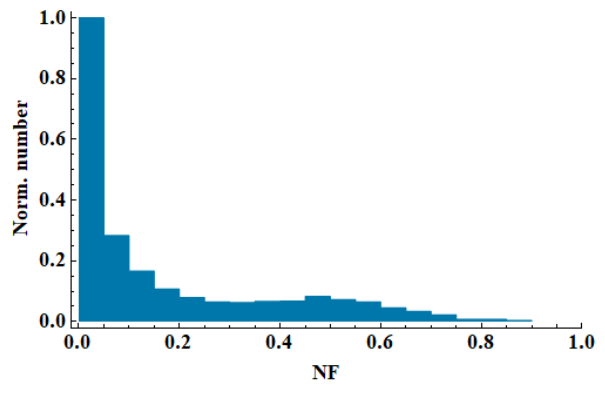

Modeling Radio Pulsar Nulling Fractions
A detectable emission feature found in more than 200 pulsars manifests as a sudden cessation of the entire radio pulsed emission for duration of several pulsar rotations to minutes. Termed “pulse nulling”, the occurrence of the phenomenon is suggested to be random. A useful means to study the phenomenon is by measuring the nulling fraction (NF), which is the proportion of pulses without detectable emission in an observation.
The NF is different for different pulsars. Recent studies demonstrate a decreasing number of pulsars with increasing NF, similarly to an exponential decay in the plot for the distribution of NF. This indicates certain underlying patterns for nulling.
“How is the randomness of pulsar nulling related to the distribution of the nulling fractions (NFs)?” remains unknown.
To unravel the puzzle, a researcher at the XAO pulsar group set out to answer the above question. A model for pulsar magnetopsheres with multiple emission states is used to model pulse nulling. Each emission state possesses a particular plasma charge density.
Assumptions are also made so that (i) pulse nulling is a manifestation of emission cessation across the whole profile; (ii) the cessation is due to switching in the plasma density to zero under favorable condition; and (iii) the emission region is divided into emission segments with the occurrence of point (ii) being separated in each segment.
Simulation was performed to produce the distribution of nulling fractions based on 5000 pulsar samples each with 1000 rotations. The resulting normalized distribution is positively skewed towards higher NFs, consistent with that obtained from observations. We show that pulse nulling is low probability event. Our results show that the NFs do not show a significant correlation with the obliquity angle, between the magnetic and rotation axes, although the number of nulling pulsars increases as the obliquity angle of a pulsar decreases.

Histogram showing the best-fit normalized distribution of the nulling fractions based on simulation of 5000 sample pulsars.
Article link: https://doi.org/10.1051/0004-6361/202553813
Attachment Download: